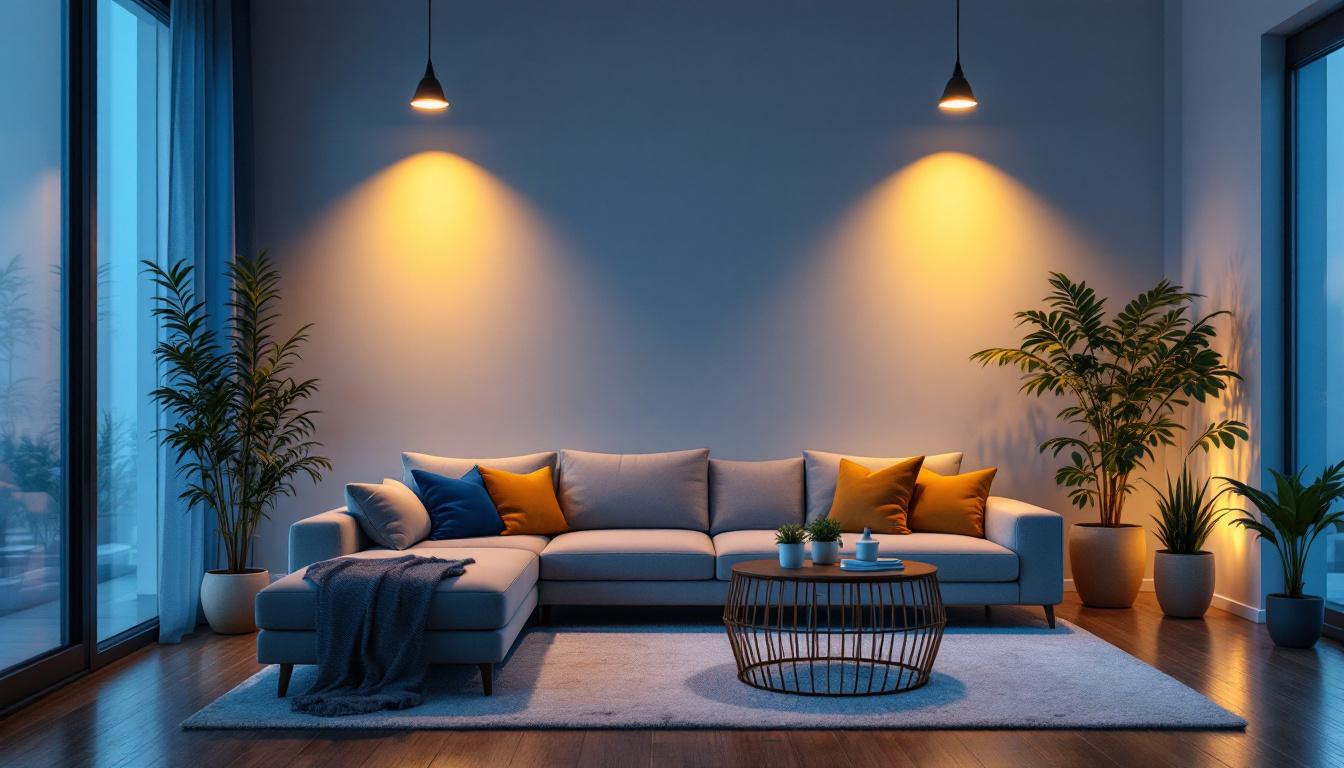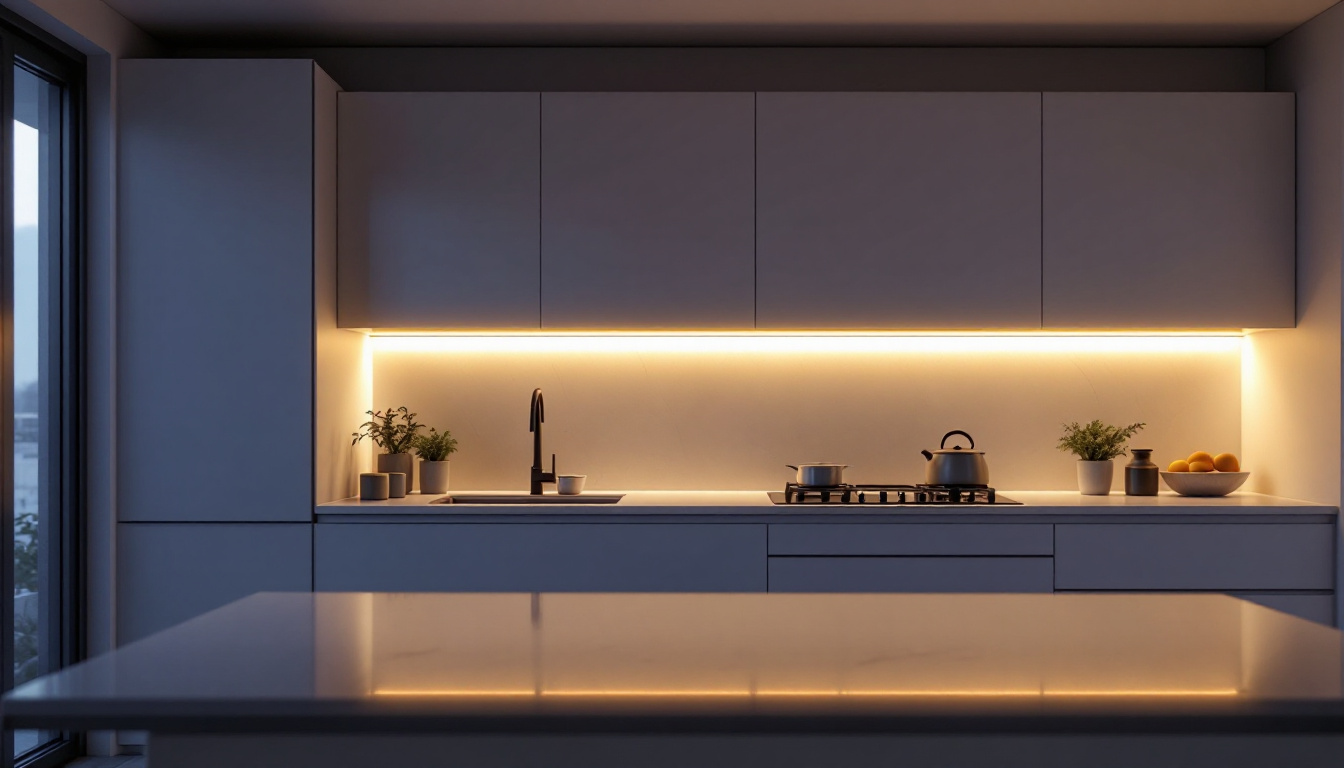
In recent years, LED canned lighting has emerged as a transformative technology within the lighting industry. As energy efficiency becomes increasingly critical in both residential and commercial spaces, understanding the impact of LED technology on energy consumption is essential for lighting contractors. This article delves into the advantages of LED canned lighting, its energy efficiency benefits, and considerations for implementation.
LED canned lighting, also known as recessed lighting, is a popular choice for modern interiors. These fixtures are installed into the ceiling, providing a sleek and unobtrusive lighting solution that enhances the aesthetic appeal of a space. Unlike traditional incandescent or fluorescent lights, LED fixtures utilize light-emitting diodes (LEDs) to produce illumination, which significantly alters their energy consumption profile.
One of the primary distinctions of LED technology is its efficiency. LEDs convert a higher percentage of electrical energy into light, while traditional bulbs waste a substantial amount of energy as heat. This efficiency translates into lower energy bills and a reduced carbon footprint, making LED canned lighting an attractive option for environmentally conscious consumers.
Moreover, the longevity of LED bulbs further enhances their appeal. With lifespans often exceeding 25,000 hours, LEDs require less frequent replacement compared to their incandescent counterparts, which typically last around 1,000 hours. This durability not only reduces waste but also minimizes maintenance costs for contractors and homeowners alike.
LED canned lighting is not only efficient but also versatile in design. Available in various sizes, shapes, and color temperatures, these fixtures can be tailored to meet the specific needs of any project. Whether aiming for a warm, inviting atmosphere in a residential setting or a bright, clinical environment in a commercial space, LED options provide flexibility without sacrificing performance.
In addition to their aesthetic versatility, LED canned lights can be integrated with smart home technology, allowing users to control brightness and color temperature through mobile apps or voice commands. This feature not only enhances convenience but also enables users to create dynamic lighting scenes that can change throughout the day, adapting to different activities or moods. Furthermore, the ability to dim LED lights without flickering or loss of color quality adds another layer of sophistication, making them ideal for spaces where ambiance is key, such as theaters or dining areas.
Another significant advantage of LED canned lighting is its ability to provide targeted illumination. By using adjustable trim options, homeowners can direct light precisely where it is needed, whether to highlight artwork, illuminate a workspace, or create a cozy reading nook. This precision not only enhances the functionality of a space but also contributes to the overall design narrative, allowing for creative expression through light placement. As a result, LED canned lighting has become a staple in contemporary design, seamlessly blending form and function to elevate any interior environment.
The shift to LED canned lighting is primarily driven by the significant energy savings it offers. In an era where energy costs continue to rise, the ability to reduce consumption without compromising on quality is invaluable. For lighting contractors, this presents an opportunity to promote energy-efficient solutions that resonate with clients.
When comparing LED canned lighting to traditional incandescent or fluorescent options, the energy savings can be substantial. LEDs consume up to 80% less energy than incandescent bulbs and about 50% less than fluorescent lights. This reduction in energy consumption not only leads to lower utility bills but also contributes to a decrease in overall energy demand.
For example, consider a typical installation of recessed lighting in a home. Replacing a 60-watt incandescent bulb with a 10-watt LED can save approximately 50 watts per fixture. In a scenario where multiple fixtures are used, the cumulative savings can be significant, resulting in a compelling selling point for contractors. Furthermore, the longevity of LED bulbs—often lasting 25,000 hours or more—means fewer replacements and less waste, creating additional savings over time.
Beyond financial savings, the environmental impact of switching to LED canned lighting cannot be overlooked. The reduction in energy consumption directly correlates with a decrease in greenhouse gas emissions. By opting for LED solutions, homeowners and businesses contribute to a more sustainable future.
Lighting contractors can play a pivotal role in this transition by educating clients about the environmental benefits of LED technology. Highlighting the positive impact on the planet can be a persuasive argument when discussing lighting options, particularly for environmentally conscious consumers. Additionally, many regions offer incentives or rebates for energy-efficient upgrades, which can further enhance the appeal of LED installations. By staying informed about these programs, contractors can guide clients toward maximizing their savings while also making a responsible choice for the environment.
Moreover, the versatility of LED canned lighting allows for creative design solutions that can enhance the aesthetic appeal of any space. From adjustable color temperatures that can mimic natural daylight to smart lighting options that integrate with home automation systems, LEDs offer a range of possibilities that traditional lighting cannot match. This adaptability not only meets the functional needs of a space but also aligns with modern design trends, making it an attractive option for both contractors and their clients.
While the benefits of LED canned lighting are clear, there are several factors to consider during implementation. Lighting contractors must be well-versed in the technical aspects of LED technology to ensure successful installations that meet client expectations.
One of the primary challenges when transitioning to LED canned lighting is compatibility with existing electrical systems. In some cases, older dimmer switches and transformers may not be suitable for LED fixtures, leading to flickering or inadequate performance. Contractors should assess the current setup and recommend necessary upgrades to ensure optimal functionality.
Additionally, understanding the wattage and voltage requirements of LED fixtures is crucial. Properly matching these specifications will prevent issues such as overheating and premature failure, ensuring a reliable lighting solution for clients.
Effective lighting design is essential for maximizing the benefits of LED canned lighting. Contractors should consider factors such as fixture placement, spacing, and beam angle to achieve the desired illumination levels. A well-planned layout can enhance the aesthetic appeal of a space while ensuring adequate lighting for tasks.
Moreover, it is important to consider the color temperature of the LEDs. Warmer tones create a cozy atmosphere, while cooler tones can enhance focus and productivity. By understanding the specific needs of each project, contractors can tailor their recommendations to suit the preferences of their clients.
While the initial investment in LED canned lighting may be higher than traditional options, the long-term savings often justify the expense. Contractors should be prepared to discuss the total cost of ownership, which includes not only the purchase price but also the energy savings and reduced maintenance costs over time.
Calculating the return on investment (ROI) for LED canned lighting can help clients understand the financial benefits of their decision. By providing a detailed analysis of energy savings, maintenance costs, and potential rebates or incentives, contractors can equip clients with the information needed to make informed choices.
For instance, if a client spends $1,000 on LED fixtures but saves $200 annually on energy bills, the ROI becomes evident over a few years. This financial perspective can be a powerful motivator for clients considering a switch to LED technology.
Many utility companies and government programs offer incentives and rebates for energy-efficient upgrades, including LED lighting. Contractors should stay informed about available programs in their area and be prepared to assist clients in navigating the application process. These incentives can significantly offset the initial costs and further enhance the appeal of LED canned lighting solutions.
The lighting industry is continually evolving, with new technologies and innovations emerging regularly. Staying ahead of these trends is crucial for lighting contractors looking to provide the best solutions for their clients.
One of the most exciting developments in LED canned lighting is the integration of smart technology. Smart LED fixtures allow for remote control, scheduling, and even automation based on occupancy or time of day. This capability not only enhances convenience but also optimizes energy usage by ensuring lights are only on when needed.
Contractors should familiarize themselves with smart lighting options and be prepared to educate clients on the benefits of integrating these technologies into their lighting designs. As smart home technology continues to gain traction, offering these solutions can set contractors apart in a competitive market.
Advancements in color technology are also shaping the future of LED canned lighting. Tunable white and color-changing LEDs provide flexibility in creating dynamic lighting environments. This innovation allows clients to customize their lighting based on mood or activity, further enhancing the versatility of LED solutions.
Contractors should be proactive in exploring these advancements and incorporating them into their offerings. By staying informed about the latest developments, contractors can provide clients with cutting-edge solutions that meet their evolving needs.
LED canned lighting represents a significant advancement in energy efficiency and design versatility. For lighting contractors, understanding the benefits and considerations associated with LED technology is essential for guiding clients toward informed decisions. By emphasizing the energy savings, environmental impact, and long-term cost benefits of LED solutions, contractors can position themselves as trusted advisors in the lighting industry.
As the demand for energy-efficient solutions continues to grow, embracing LED canned lighting will not only benefit clients but also contribute to a more sustainable future. By staying informed about the latest trends and technologies, lighting contractors can ensure they remain at the forefront of the industry, ready to meet the needs of their clients and the environment alike.
Ready to harness the energy efficiency and design flexibility of LED canned lighting for your next project? At LumenWholesale, we provide lighting contractors with the highest quality, spec-grade LED solutions at unbeatable wholesale prices. Say goodbye to inflated markups and hello to our extensive selection of reliable, high-performance lighting that meets the highest industry standards. With the added convenience of free shipping on bulk orders, you can trust that you’re getting premium lighting at the best value — without any hidden fees. Elevate your lighting projects by choosing LumenWholesale, where quality, affordability, and convenience come together seamlessly. Wholesale Lighting at the Best Value is just a click away.

Discover how LED lighting is transforming projects for lighting contractors with real-world success stories.

Discover how advanced arena lighting solutions can give lighting contractors a competitive edge in securing more bids.

Discover expert-recommended best practices for installing thin under cabinet lighting in this comprehensive guide tailored for lighting contractors.

Discover the essentials of creating a compelling lighting website in just five minutes.